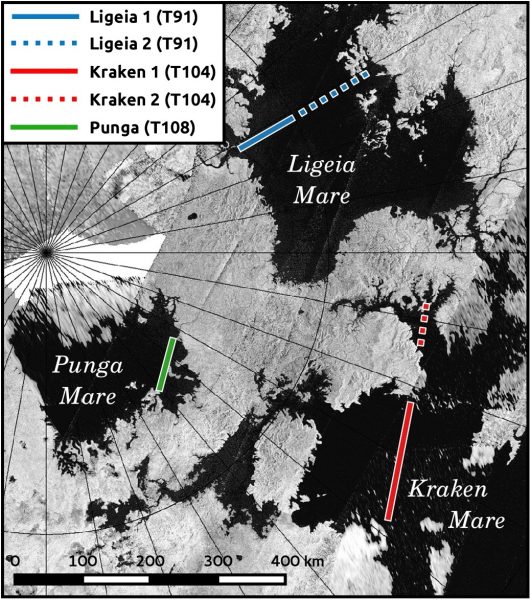Smooth Lakes on Titan
November 20, 2017

The lakes of liquid methane on Saturn’s moon, Titan, are perfect for paddling but not for surfing. Research led by the Jackson School has found that most waves on Titan’s lakes reach only about 1 centimeter high, a finding that indicates a serene environment that could be good news for future probes sent to the surface of that moon.
“There’s a lot of interest in one day sending probes to the lakes, and when that’s done, you want to have a safe landing, and you don’t want a lot of wind,” said lead author Cyril Grima, a research associate at the University of Texas Institute for Geophysics.
“Our study shows that because the waves aren’t very high, the winds are likely low.”
The research was published in the journal Earth and Planetary Science Letters on June 29, 2017. It specifically looked at waves on the three largest lakes in Titan’s northern hemisphere: Kraken Mare, Ligeia Mare and Punga Mare. Grima and his team found that waves across these lakes are diminutive, reaching only about 1 centimeter high and 20 centimeters long.
Titan is the largest moon of Saturn and one of the locations in the solar system that is thought to possess the ingredients for life.
Collaborators include researchers from Cornell University, NASA’s Jet Propulsion Laboratory and The Johns Hopkins University Applied Physics Laboratory. The research was funded by NASA and the California Institute of Technology Jet Propulsion Laboratory.
Back to the Newsletter